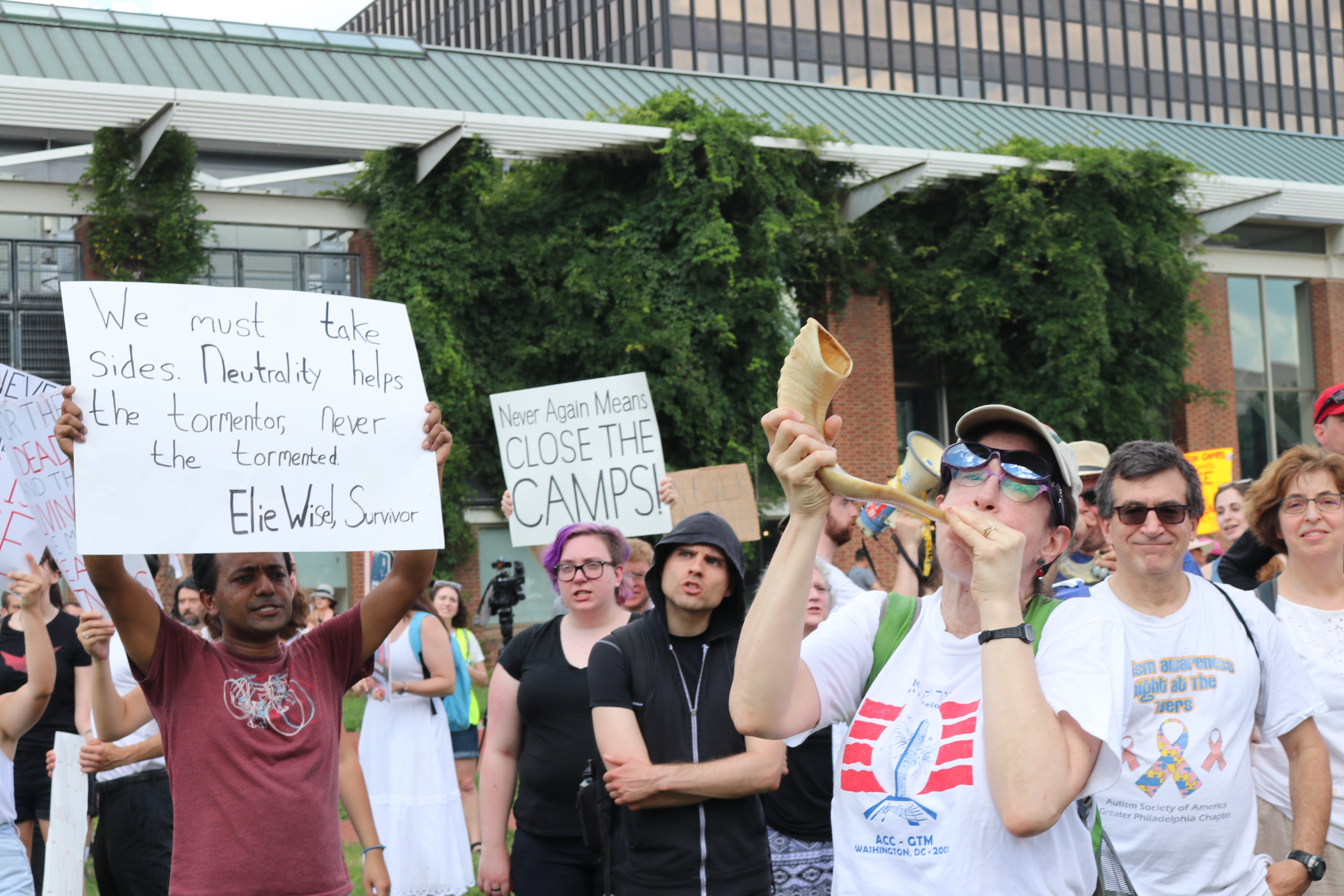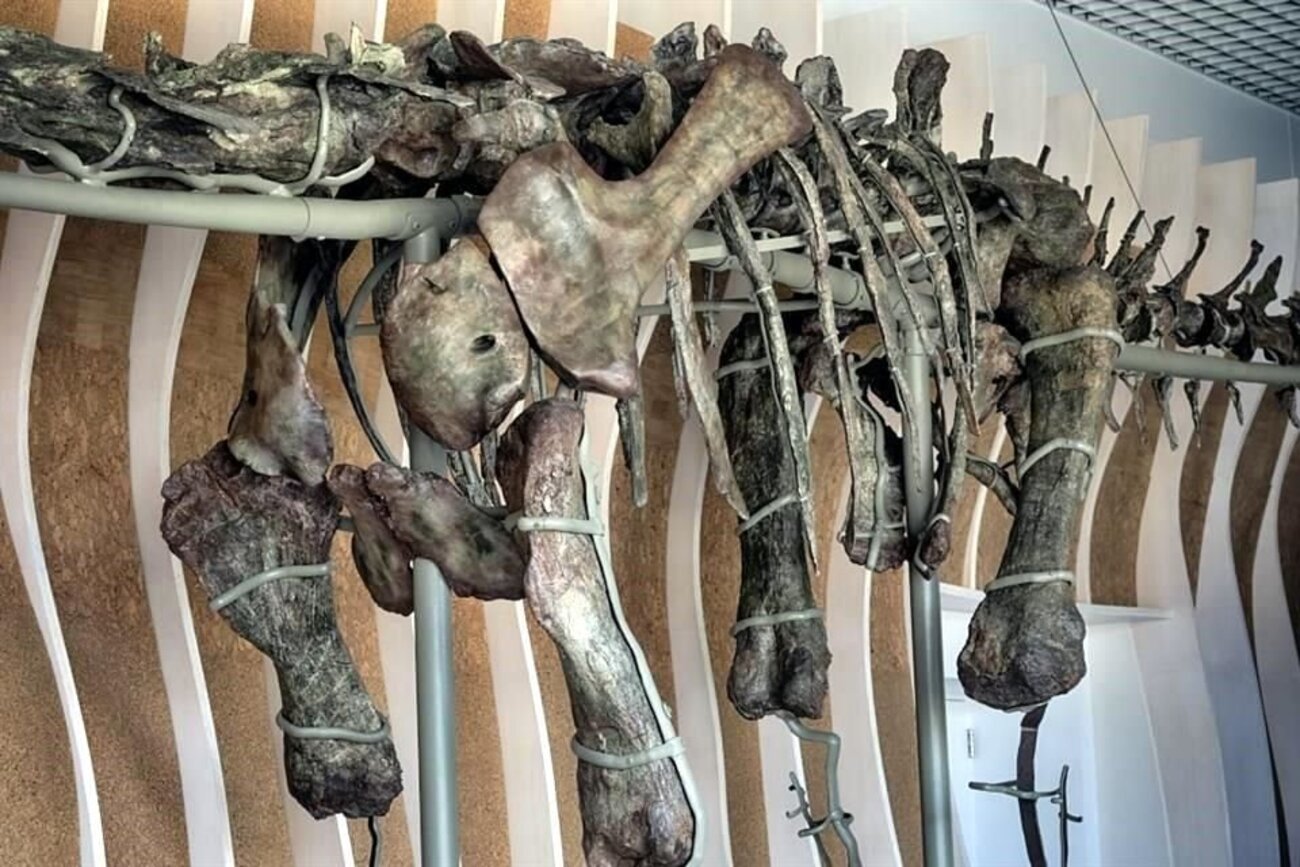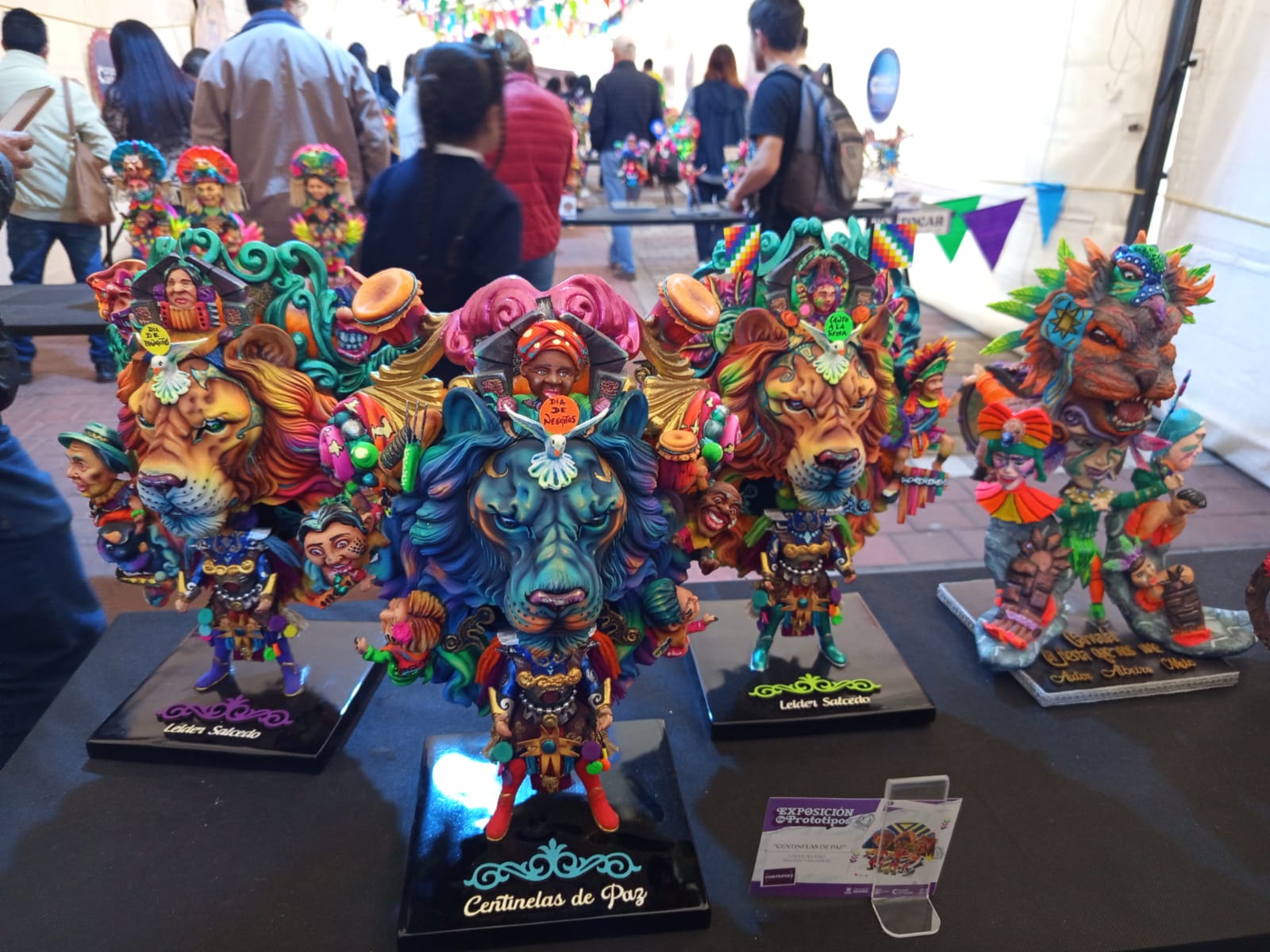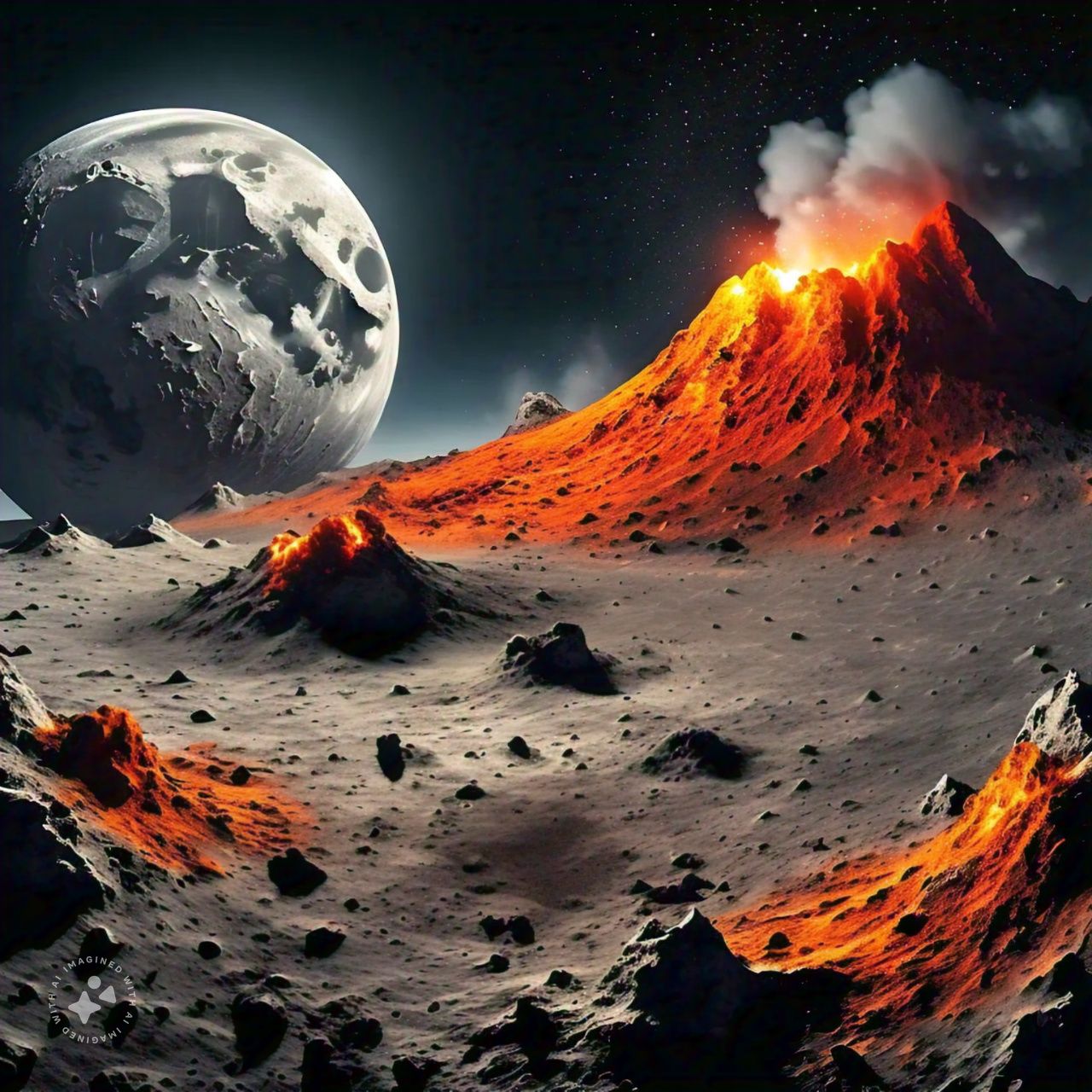
Jewish activists in Philadelphia remind Americans that not everyone has freedom
Chants of “Stand Up! Fight Back!” were blasted over a megaphone as over 300 Jewish protesters and their allies took to the streets of Philly on Independence Day, to express that not everyone in this country is free — specifically asylum seekers and undocumented immigrants in detention centers.
Over the past two weeks, chants like these were heard in more than five cities across the country as Jewish activists and their allies, including members of the undocumented community, protested.
[node:field_slideshow]
The protest was called Never Again Is Now: Philly Mass Mobilization. The organizers of the protest are part of NeverAgainAction, a Jewish movement calling for the abolishment of ICE and closing of the detention centers, or concentration camps, as they call them.
Organizer Lizzie Horne, a rabbinical student studying to become a Reconstructionist rabbi explained why they chose Independence Day, a day that celebrates independence and freedom, for the protest.
“As we think about lifting what is happening at the border to the forefront, it felt like exactly the right thing to do to have this on a day when we are celebrating freedom for everyone because we know that that's not true.”
Last Thursday, protesters marched from the DHS Ice Office to Independence Hall, where they came face to face with police, chanting and singing along the route. Organizer Pele IrgangLaden led protesters with chants like, “Refugees are welcome here. Immigrants are welcome here. Never again means never again para nadie. Close the camps!”, and sang songs like “Your people are my people. Your divine, my divine.”
Pele IrgangL aden leading people in a chant. @NeverAgainActn pic.twitter.com/MWuQcOZPKU
— AL DÍA News (@ALDIANews) July 4, 2019
Thirty-three of the protesters were arrested for civil disobedience, when they interrupted the Independence Day parade. Originally it was reported that 36 were arrested, but was later confirmed as 33.
BREAKING: 36 #JewsAgainstICE & allies were just arrested blocking the 4th of July parade in Philadelphia.
— ✡️ Never Again Action ✡️ (@NeverAgainActn) July 4, 2019
We are committed to putting ourselves and our bodies on the line, the way we wish European gentiles had done for us 70 years ago. #NeverAgainIsNow!https://t.co/NbPSOToXks pic.twitter.com/S0AHeStF84
One of the protesters was Daniel Holtzman (they/theirs.) While not arrested for civil disobedience in Philadelphia, they were arrested at the first protest in New Jersey, which happened on June 30.
Organizer Sarah Giskin explained why protesters like Holtzman performed civil disobedience.
“They did this to call further attention to this [situation], to really make a statement that what is happening to undocumented immigrants is not ok and that the Jewish community is taking a stance and standing up against it.”
On Monday, July 8, Jewish activist movements like NeverAgainAction collaborated with other organizers such as @JFREJNYC, @ConMijente, @nychange, and @MaketheRoadNY , an immigrant organization based in NY for the Latinx community, for a protest in New York calling on Palantir Tech to stop working with ICE.
As recently as July 9, 18 activists were arrested in Washington D.C. for the cause, when they parked themselves at the Cannon Congressional building, their way of calling on policymakers to create immigration reform.
In Philadelphia, organizers of the protest on July 4 worked with both Movimiento Cosecha and Juntos, two activist groups that support the rights of documented and undocumented immigrants. Juntos is Philly based and mostly works in the South Philly community.
At all of these protests, Jewish activists have drawn parallels between detention centers and concentration camps, which has caused both controversy and support within the Jewish community. The term received media attention after it was used by Rep. Alexandria Ocasio-Cortez as a way of describing what is happening at detention centers.
Organizer Horne commented,
“Calling them that is actually the reality of what they are. It might be a different place, it might be different timing, it might be different people, but in many ways it's the same. After the Holocaust we made a commitment as a Jewish people to say never again..what we really mean by never again is never again for anyone.”
CONTENIDO RELACIONADO
Twenty-four adults have died at the ICE Detention Centers as well as six children, due to inhumane conditions.
Ocasio-Cortez visited a detention center in Clint, TX, on July 1, where women have been told to drink water from the toilets. However, the Border Control claims this is false, following reports from women who had said they were forced to drink from them. On July 2, overcrowding at border patrol facilities in Texas was reported by CBS.
This follows earlier reports which stated that children are living in inhumane conditions in detention centers, some without access to adequate food, water or sanitation and that people are being denied the right to medical care.
One of those detention centers is only three hours away from Philadelphia, in Berks County, which many of the protesters were calling to be shut down. PA Governor Tom Wolf could close the center with an Emergency Removal Order.
Jasmine Rivera of the Shut Down Berks Coalition shared how this detention center, which she referred to as a prison, is violating the law, and that reports of sexual assault have been made by the detainees.
A protestor calling for Shutting Down Berks, a detention center in Berks County pic.twitter.com/ZzgBowB35V
— AL DÍA News (@ALDIANews) July 4, 2019
While Philadelphia no longer has the PARS contract which allowed ICE access to the Police Arraignment Reporting System (PARS), the agency still has had a strong presence in the state, as evidenced by this detention center.
Rivera, an ally to the Jewish community, stood alongside Rabbi Linda Holtzman who led protesters in the Mourner’s Kaddish, as a way to honor those who have died in detention centers. She reminded Jewish protesters that the Kaddish is a way to remember, but also are an act of resistance.
Rabbi Linda Holzman explained what the Mourner’s Kaddish, a Jewish prayer of memory means and how it relates to the immigrant community. @NeverAgainActn pic.twitter.com/hYkFOBPdTP
— AL DÍA News (@ALDIANews) July 4, 2019
Horne also expressed that Jewish people have a history of being immigrants, and for many, refugees to this country.
“We are a diasporic people and we come from all different places and all of us had to leave for one reason or another because we weren't welcome there so we emigrated to the U.S. because we were promised the American dream that every other immigrant community is promised.”
Sandy Lieberman, a protestor also drew on the idea of the Jewish people being refugees as a reason for her to protest.
“I am here because my family, my people were refugees and I didn’t want to be a bystander to an atrocity where refugees are barred from our country.”
Sasha Balofsky, who marched alongside her husband Nachum Balofsky, was one of those refugees. She came to the United States when she was five, alongside her parents who were political refugees from Ukraine.
“There is kind of a personal element in seeing people who emigrated, who are escaping violence so just seeing and hearing these people being locked up and the family separation is inherently immoral to me. We got the opportunity to come here and we were treated with respect and dignity and I think these people deserve it as well no matter what country they are coming from.”










DEJE UN COMENTARIO:
¡Únete a la discusión! Deja un comentario.